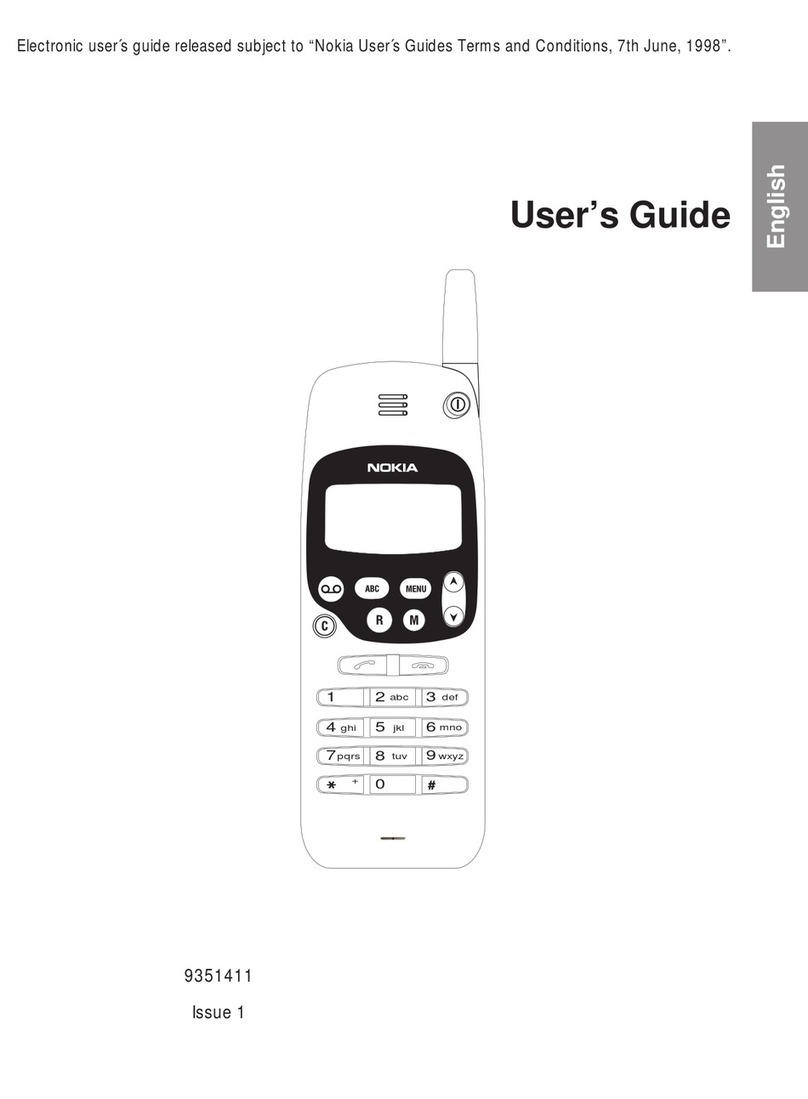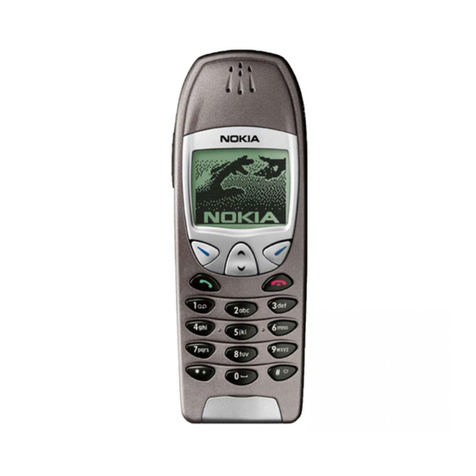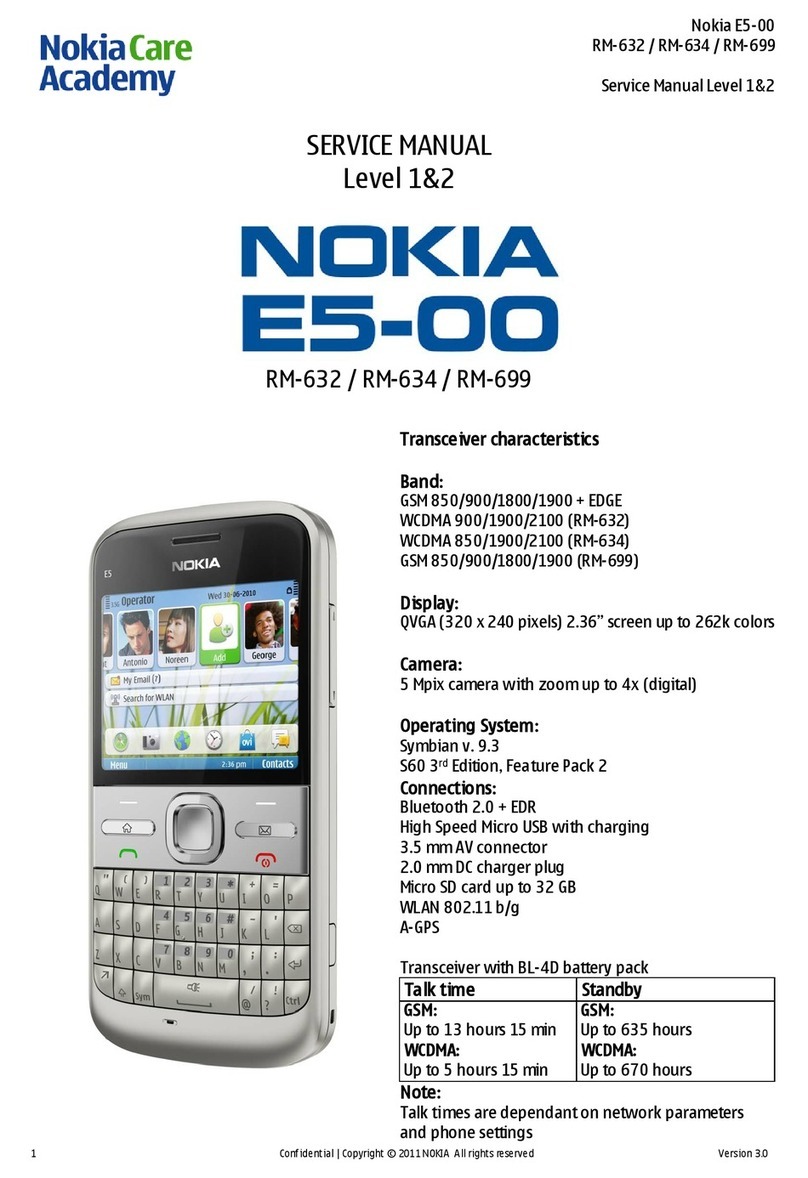
CONFIDENTIAL Service & Analysis Center Europe
Training Team
version 1.0 / 05.11.1999 Page 6 of 37
Battery connectors X101/ X102 / bend out dirty
•Check if VBATT and Gnd are connected
Power on/off switch S416 faulty/ mechanical broken
•Check if 3,2V on R413 drops of 0V during pressing the Power on button
L102 poor soldering
•Check the soldering of L102
•Check the resistance in "off mode=0Ω"
•Resolder L102 or change it
N100 CCONT faulty
•Check if 3,2V on R413 drops of 0V during pressing the Power on button
•Check if there is a 32.768 kHz square wave on C149
•Check if PURX on R303 goes up to 2.8 V DC
•Check if VXO on C102 goes up to 2.8 V DC
•Check if VBB on C117 goes to 2,8V DC
•Check if Vref on C123 goes to 1,5V DC
B100 faulty 32,768KHz
•Check 32.768 KHz ; 700mVpp clock signal on B100
•Check also C147, C148, C153
G701 faulty 13 MHz
•Check VCC 2,8V DC on G701
•Check 13 MHz output frequency; 1,2 Vpp on the output pin
VB to R132 board faulty
•Check the battery voltage 2,6V on L102
•Check the same voltage on R132
•Check if the connection from R132 to L102 are 0Ω
•Don't forget to put the additional label on the PCB, it save the layer (see Service Bulletin 11)
D200 MAD faulty
•Check if there is a 32,768 KHz square wave on C149
•Check the 13MHz main clock oscillator on C301 800mVpp
•Check VBB 2,8 V DC on C117
•Check PURX 2,8 V DC on R303 (comes from CCONT)
•Check SLEEPX 2,8 V DC 0n measurement point J 340
•MAD are probable faulty
•MAD are not interchangeable swap the handset
V105 DC/DC converter faulty
•Check the voltage difference on the diode V101 Anode: 2,6V DC, cathode: 3,2V DC
•Check the 600KHz switching frequency on pin 4, 5, 12, 13 from V105
•Check the 1,2V operation voltage on pin 15 from V105
•Check if pin 3 from V105 have low status ≈0V, if not check V109 and the respective voltage dividers R131, R132,
R134, R143, R144
•Change the V105



















































